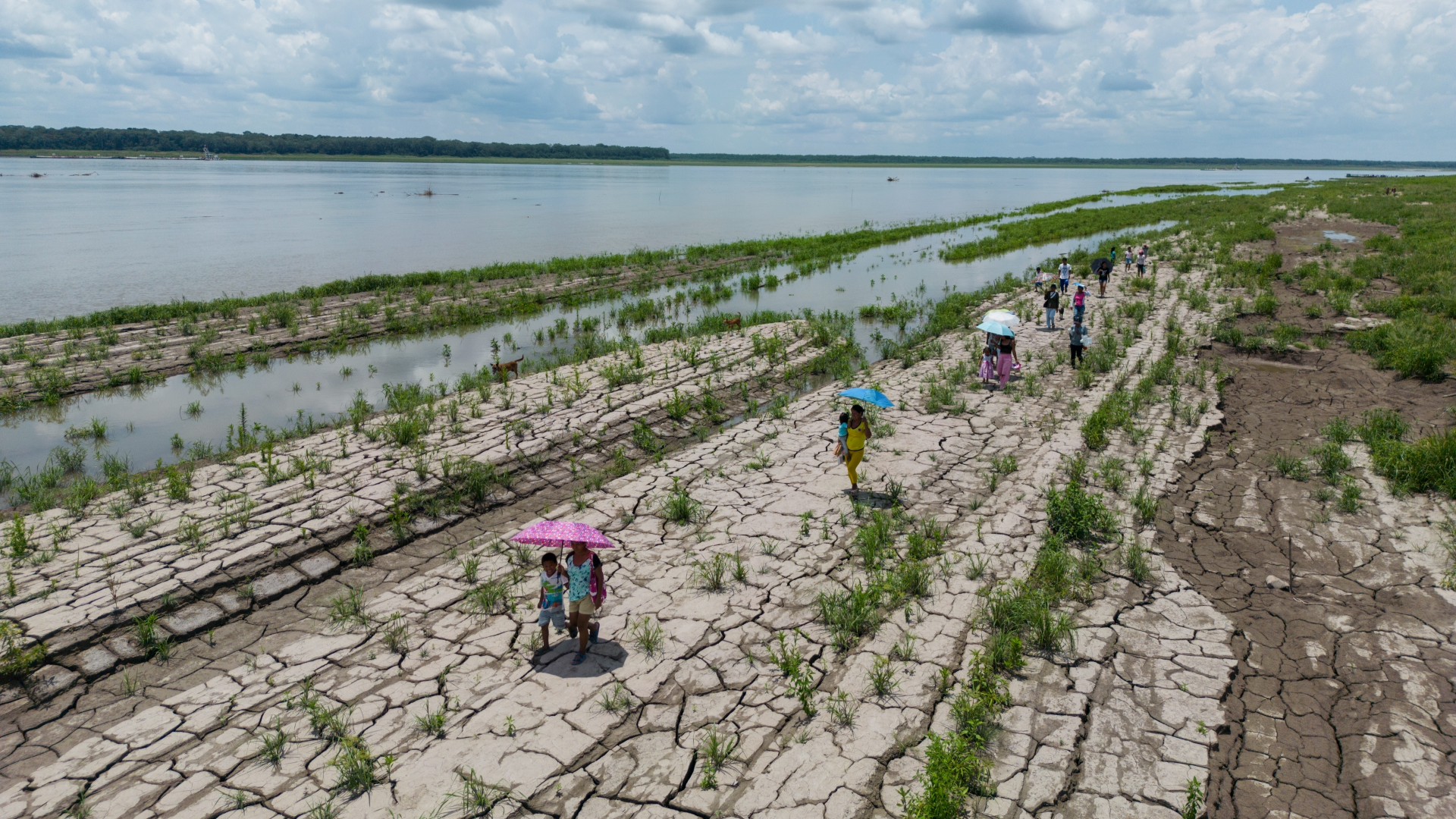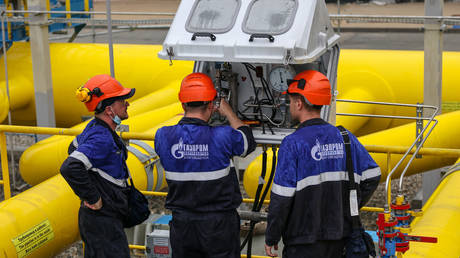Extreme Drought in Colombia Severely Affects Indigenous Communities
In Colombia, Indigenous communities are facing the harsh impacts of severe drought.

However, just a year earlier, this would have been impossible; the river was far above his head. Flores has never witnessed the Amazon at such low levels, and their efforts resulted in an empty net before they moved downriver, managing to catch only a few small fish. The dwindling catch is compelling him and his fellow fishermen to travel further down the river each day, increasing his fuel costs.
"The drought has hit me hard," said Flores, who belongs to the Cocama Indigenous community. "When the water's low, the fish die, so there's nothing to get."
The Amazon River typically ebbs and flows with the dry and rainy seasons. However, since last year, there has been a notable drop, particularly impactful in Brazil. This trend is now affecting other Amazonian countries, disrupting local economies and food supplies.
In Colombia, the river's decline has cut off several rural Indigenous communities, forcing nonprofits and the government to provide water and food to areas reliant on rain and river water for survival. In some regions, community members face arduous hour-long treks through dried-out areas to obtain basic necessities. Meanwhile, schoolchildren are forced to walk two hours to classes as boats can no longer drop them off nearby.
Colombia's National Unit for Disaster Risk Management reported last month that water levels have plummeted between 80 percent and 90 percent in recent months.
"I've been very concerned, particularly for the Indigenous communities that are affected the most because all the food has already run out," said Alvaro Sarmiento, head of operations for the Colombian Civil Defense in Amazonas province at Leticia's port. "For Indigenous people, fishing is their main source of food."
Sweeping expanses of sand can be seen where the river has receded, with cracks in the earth along the banks revealing how drastically the water has fallen. Large sections of land have crumbled into what's left of the river, and on tree trunks, white marks indicate the former water level.
"In the 35 years I've been in the Amazon, it's the first time I've seen it this low," said Jugalvis Valencia, 61, a boat tour guide. He fears that if drought conditions persist next year, some river sections may dry up completely.
"If we have a similar summer next year, it's possible that we will get cut off and we'll be stuck in Leticia," he warned.
Communities are in dire need of resources and water. In the outskirts of Leticia, Ermencida Miranda operates a small store from her wooden home built on stilts, selling cleaning supplies and foods from Peru, Colombia, and Brazil in a tri-national area. Miranda expresses concern about water accessibility.
"In all the communities ... we are suffering because of the water, because it's not raining, the drought is really severe," said Miranda, 48, who moved from Putumayo province eight years ago seeking better economic opportunities.
"We bathe in the river water, but for cooking and drinking we have to wait for rainwater and when there's none, we have to buy water from Leticia. Imagine that!" she shared, identifying herself as a member of the Tikuna people.
About 32 kilometers downriver lies the Indigenous reserve of Santa Sofia, home to around 2,400 individuals from five different Indigenous groups. Residents gathered in the shade of mango trees as they awaited supplies from a nonprofit organization. Last year, the river flowed right up to the mango trees, but now its low levels necessitate a five-minute walk along a sunbaked, cracked path.
The nonprofit delivered food items, including lentils, rice, and cooking oil, along with three large cisterns for rainwater collection and storage. Local residents carried the heavy bags of supplies back to their homes, while men worked together to transport the cumbersome cisterns.
"It's been hard for us to get food, and to take our crops for sale to Leticia because of the drought," noted Santa Sofia resident Elder Kawache, 47.
Accessing drinking water has been the biggest struggle during the drought, as the local well has also gone dry, according to Kawache, who is from the Cocama community.
Colombia's environment ministry did not respond to requests for comments regarding the drought. However, the National Unit for Disaster Risk Management announced it would distribute motorized pumps and hoses to isolated regions and initiate contracts for exploring underground water sources. It plans to send humanitarian kits containing drinking water and nonperishable food to affected communities.
Peru has declared a state of emergency and pledged to supply medicines and chlorinated water to riverside communities. Brazilian authorities are providing potable water and water purification systems while announcing that advance payments will be made to qualifying families in impacted areas.
Although the river has seen slight rises in some areas recently, concerns remain about future droughts.
Miranda has seen little evidence of government assistance at her store and longs for an elevated water tank to ease the burden of carrying water during the summer.
"If someone could help us to get water, it would be a happiness and a change to life, wouldn't it? Because water is very important for us."
Alejandro Jose Martinez for TROIB News
Find more stories on the environment and climate change on TROIB/Planet Health












